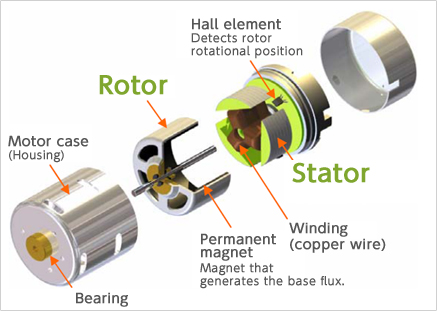Have many applications of permanent magnets in intelligent drones.They are widely used in intelligent drones, mainly in the following aspects:
1. Motor (brushless motor)
Brushless motors are the core components of modern drone power systems, and the application of permanent magnets in motors is particularly important. Permanent magnet motors use the magnetic field of permanent magnets to interact with the magnetic field generated by current to drive the rotor or propeller of the drone. Compared with traditional brushed motors, brushless motors have higher efficiency, longer service life and less maintenance requirements.
Advantages:
High efficiency: Reduced energy loss.
Longer flight time: Due to the application of high-efficiency motors, smart drones can achieve longer flight times.
Low noise: Brushless motors are quieter than brushed motors and are suitable for the application of smart drones in various environments.
2. Magnetic sensors (magnetometers)
Magnetic sensors are widely used in the navigation and attitude control systems of drones. Magnetometers are based on the principle of magnetic fields and use the magnetic field generated by permanent magnets to determine the orientation and direction of drones. This plays a vital role in drone flight control and self-positioning, especially when GPS signals are unavailable or weak.
Advantages:
Provide accurate orientation information: By detecting changes in the earth’s magnetic field, the attitude and heading of the drone can be accurately determined.
Self-positioning in complex environments: When the GPS signal is unstable, the magnetometer can provide alternative positioning and direction data for the drone.
3. Electronic stabilization system
Permanent magnets are also used in the electronic stabilization system of some intelligent drones. By combining magnetic sensors and permanent magnet motors, intelligent drones can maintain a stable flight attitude under different environmental conditions. This is especially important for high-precision tasks (such as aerial photography, mapping, etc.).
Advantages:
High-precision attitude control: The drone can respond and adjust quickly during flight to cope with wind and other external interference.
Enhanced flight stability: The combination of permanent magnets and related sensors can effectively reduce jitter and deviation during flight.
4. Battery management system
In some advanced drones, permanent magnets are also used in battery management systems. By using magnetic materials, the system can achieve rapid connection and disconnection of batteries, improve charging efficiency, and reduce wear on battery connection parts.
5. Other uses
Fastening and adsorption applications: In some components of drones (such as external sensors or devices), permanent magnets can be used for fastening and adsorption to ensure the stability of the equipment.
Self-repairing system: Some intelligent drone designs may also include magnetic self-repairing systems, which use permanent magnetic materials to achieve self-docking and repair of certain components.





